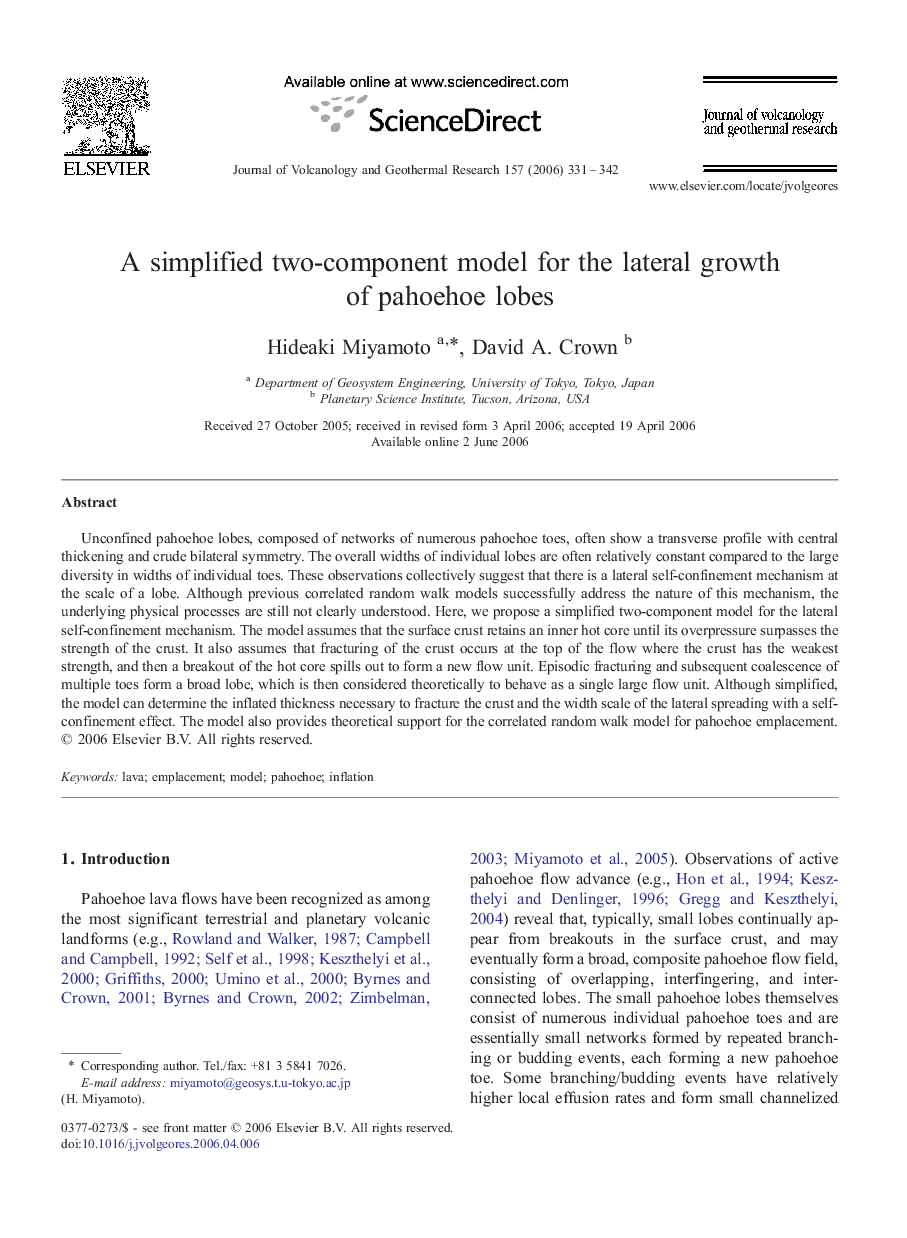| Article ID | Journal | Published Year | Pages | File Type |
|---|---|---|---|---|
| 4715346 | Journal of Volcanology and Geothermal Research | 2006 | 12 Pages |
Unconfined pahoehoe lobes, composed of networks of numerous pahoehoe toes, often show a transverse profile with central thickening and crude bilateral symmetry. The overall widths of individual lobes are often relatively constant compared to the large diversity in widths of individual toes. These observations collectively suggest that there is a lateral self-confinement mechanism at the scale of a lobe. Although previous correlated random walk models successfully address the nature of this mechanism, the underlying physical processes are still not clearly understood. Here, we propose a simplified two-component model for the lateral self-confinement mechanism. The model assumes that the surface crust retains an inner hot core until its overpressure surpasses the strength of the crust. It also assumes that fracturing of the crust occurs at the top of the flow where the crust has the weakest strength, and then a breakout of the hot core spills out to form a new flow unit. Episodic fracturing and subsequent coalescence of multiple toes form a broad lobe, which is then considered theoretically to behave as a single large flow unit. Although simplified, the model can determine the inflated thickness necessary to fracture the crust and the width scale of the lateral spreading with a self-confinement effect. The model also provides theoretical support for the correlated random walk model for pahoehoe emplacement.
